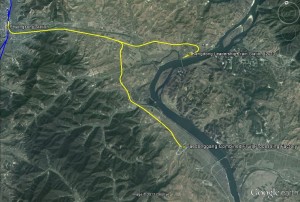Institute for Far Eastern Studies (IFES)
2014-1-20
North Korea is encouraging “localization” of raw materials in light industry and construction from this year to improve the lives of the North Korean people.
On January 7, RodongSinmun reported that various cabinet organizations were espousing the New Year’s address of Kim Jong Un. It reported that the Ministry of Light Industry’s executives and employees are engaging in discussions to explore ways to increase localization of raw materials in light industry factories.
A rally was held in Pyongyang earlier this month at Kim Il Sung Square where people pledged to accomplish the national tasks put forward by Kim Jong Un. Tong Jong Ho, Minister of Construction and Building-Materials Industry,delivered a speech that vowed to “make an unprecedented leap in localization of building materials (cement, glass, metals, and other construction materials),” by repairing building materials factories in all provinces.
The Choson Sinbo, pro-North Korean newspaper in Japan,reported on January 2 that at the New Year meeting at the Pyongyang Socks Factory, the plant manager, Lee Sung Hui, made a speech and promised to “raise the level of socks production and localization of raw materials to a higher level in Vinalon and PP fibers (synthetic) this year.”
North Korea is promoting light industry and construction as the key sectors to improve the living standards of the people and asserting localization of raw materials as a priority to make advancements in these fields.
In his New Year message, Kim Jong Un emphasized that lighting industry must play a “major part in improving the people’s standard of living” and that the construction sector is “an important front for solidifying the foundations of a thriving country and creating bases for the people’s happy life.” He called for modernization of factories in light industry and normalization of production, placing importance on increasing the proportion of locally-available raw materials.
Many experts analyze this year’s rising emphasis on the localization of raw materials as reflecting the intentions of the North Korean authorities to focus on pragmatically achievable policy goals first. Of course, increasing the proportion of locally-available raw materials requires the construction of domestic production base, which remains complicated because of international sanctions and lack of foreign currency — issues that cannot be easily resolved– among other limitations.
From 2012, North Korea’s launch of a long-range rocket and third nuclear test was accompanied with rising emphasis on the importance of localization. On December 3, 2013, Rodong Sinmun carried an article entitled, “Localization and National Pride,” that reported on the onsite inspection visits by Kim Jong Un to various economic sectors where he underscored the importance of “equipment, materials, and elements of localization” and “our strengths and technology.”
North Korea acclaimed that the launch of the long-range rocket in December 2012 was a “successful launch of a satellite based on 100 percent domestic science and technology.” Then in February last year, immediately following the nuclear test, it boasted that “Thrilling clap of independent nuclear thunder broke out based on 100 percent of our own wisdom and technology.”

